|
Informing Best Practice For Mitigation And Enhancement Measures For Barn OwlsHenrietta Pringle, Gavin Siriwardena and Mike Toms
BTO Research Report 692
British Trust For Ornithology
2017
Summary: "Using the BTO’s ring-recovery database we have been able to analyse dispersal movements, with the aim of providing insight into Barn Owl movements in the UK. The results of this work suggest that new, high-quality habitat aimed at mitigating negative effects of HS2 on Barn Owls should be located between 3 km and 15 km away from the railway route, depending on the importance placed on minimising juvenile, as opposed to adult, mortality."
|
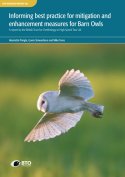 |
|
BirdTrends 2016: Trends In Numbers, Breeding Success And Survival For UK Breeding Birds Rob Robinson, John Marchant, Dave Leech, Dario Massimino, Martin Sullivan, Sarah Eglington, Carl Barimore, Daria Dadam, Ian Woodward, Mark Hammond, Sarah Harris, David Noble, Ruth Walker and Stephen Baillie
BTO Research Report 691
British Trust for Ornithology
2017
Online report at http://www.bto.org/about-birds/birdtrends/2016.
From the introduction: "The main emphasis of this report is on trends in the abundance and demography of individual breeding species. The system of alerts, derived from the BTO's census and nest record data, ensures that conservation bodies are quickly made aware of important demographic changes."
|
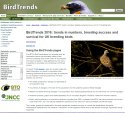 |
|
No report identified
BTO Research Report 690
British Trust for Ornithology
|
 |
|
No report identified
BTO Research Report 689
British Trust for Ornithology
|
 |
|
No report identified
BTO Research Report 688
British Trust for Ornithology
|
 |
|
The Breeding Bird Survey 2015S.J. Harris, D. Massimino, S.E. Newson, M.A. Eaton, J.H. Marchant, D.E. Balmer, D.G. Noble, S. Gillings, D. Procter, & J.W. Pearce-Higgins
BTO Research Report 687
British Trust For Ornithology
2016
"This is the twenty-first annual report of the BTO/JNCC/RSPB Breeding Bird Survey (BBS), containing the population trends of widespread UK bird species during the period 1994–2015.The BBS is the main scheme for monitoring the population changes of the UK’s common breeding birds, providing an important indicator of the health of the countryside. BBS trends are produced each year for over 100 species, and the results are used widely to set priorities and inform conservation action."
|
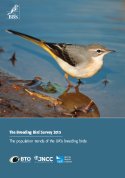 |
|
No report identified
BTO Research Report 686
British Trust for Ornithology
|
 |
|
No report identified
BTO Research Report 685
British Trust for Ornithology
|
 |
|
Providing Data For Rapid Condition Assessment Of Non-Breeding Waterbird Spas In England: Phase IIGraham E. Austin, Teresa M. Frost and Kathryn Ross
BTO Research Report 684
British Trust For Ornithology
2017
From the executive summary: "This report explores means by which a standardised trend analysis of data from the Wetland Bird Survey (WeBS) can aid rapid assessment of condition for non-breeding waterbird SPAs in England. This follows on from pilot work to investigate means by which rapid condition assessment of SPAs in England could be developed, adapting the existing Wetland Bird Survey (WeBS) Alerts approach to fit more closely with Common Standards Monitoring requirements (Austin 2015)."
|
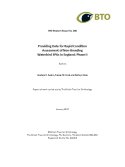 |
|
No report identified
BTO Research Report 683
British Trust for Ornithology
|
 |
|
No report identified
BTO Research Report 682
British Trust for Ornithology
|
 |
|
No report identified
BTO Research Report 681
British Trust for Ornithology
|
 |
|
No report identified
BTO Research Report 680
British Trust for Ornithology
|
 |
|
No report identified
BTO Research Report 679
British Trust for Ornithology
|
 |
|
BirdTrends 2015: Trends In Numbers, Breeding Success And Survival For UK Breeding BirdsRob Robinson, John Marchant, Dave Leech, Dario Massimino, Martin Sullivan, Sarah Eglington, Carl Barimore, Daria Dadam, Iain Downie, Mark Hammond, Sarah Harris, David Noble, Ruth Walker and Stephen Baillie
BTO Research Report 678
British Trust for Ornithology
2016
Online report at http://www.bto.org/about-birds/birdtrends/2015.
From the home page: "The BTO's BirdTrends report is a one-stop shop for information about the population status of the common breeding birds of the wider UK countryside. The report is based on data gathered by the many thousands of volunteers who contribute to BTO-led surveys. For each of 120 species, users can quickly access the latest information on trends in population size, breeding performance and survival rates, as measured by our long-term monitoring schemes."
|
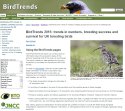 |
|
An Assessment Of The Potential Benefits Of Additional Stratification Of BBS Squares By Habitat And Accessibility To Enhance The Monitoring Of Rare Species And HabitatsB Martay, J W Pearce-Higgins, S Gillings & S R Baillie
BTO Research Report 677
British Trust For Ornithology
2015
From the executive summary: "Every year approximately 3000 volunteers across the UK take part in the BTO/RSPB/JNCC Breeding Bird Survey (BBS), recording breeding birds in randomly selected 1 km squares (stratified regionally by observer availability) to robustly monitor population trends of some 110 UK bird species. However, the chances of randomly selected squares containing rarer bird species and the habitats of interest that only cover a small proportion of the landscape are low, limiting our ability to monitor population changes. Here we examine options for increasing coverage of rare species and of assemblages occupying certain habitats of interest within the BBS framework, by including additional st rata based on habitat type. We also assess the benefits and risks of including an additional stratum based on accessibility to increase volunteer uptake in large regions with low observer density and many inaccessible areas."
|
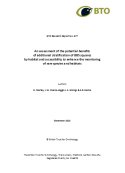 |
|
How High Do Birds Fly? Development Of Methods And Analysis Of Digital Aerial Data Of Seabird Flight HeightsAlison Johnston & Aonghais S.C.P Cook
BTO Research Report 676
British Trust For Ornithology
2016
From the executive summary: "The initial aims of this project were to : develop approaches to produce statistical distributions of seabird flight heights from digital aerial survey data; compare these distributions with those produced from boat survey data; assess the reasons for and implications of any differences between boat and aerial data for collision risk modelling; if appropriate, update boat-based distributions with data from digital aerial surveys. These objectives were delivered, but it was decided that due to limitations associated with data availability, it was not appropriate to update boat-based distributions with those produced here."
|
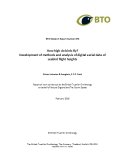 |
|
No report identified
BTO Research Report 675
British Trust for Ornithology
|
 |
|
No report identified
BTO Research Report 674
British Trust for Ornithology
|
 |
|
The Breeding Bird Survey 2014S.J. Harris, D. Massimino, S.E. Newson, M.A. Eaton, D.E. Balmer, D.G. Noble, A.J. Musgrove, S. Gillings, D. Procter, & J.W. Pearce-Higgins
BTO Research Report 673
British Trust For Ornithology
2015
Opening lines: "This is the twentieth annual report of the BTO/JNCC/RSPB Breeding Bird Survey (BBS), containing the population trends of widespread UK bird species during the period 1994–2014. The BBS is the main scheme for monitoring the population changes of the UK’s common breeding birds, providing an important indicator of the health of the countryside. BBS trends are produced each year for over 100 species, and the results are used widely to set priorities and inform conservation action."
|
 |
|
No report identified
BTO Research Report 672
British Trust for Ornithology
|
 |
|
Dispersal And Movements Of Lesser Black-Backed Gull In EuropeViola H Ross-Smith, Robert A Robinson & Jacquie A Clark
BTO Research Report 671
British Trust For Ornithology
2015
From the executive summary: "Lesser Black-backed Gull numbers have fluctuated across this species’ breeding range in recent decades, with a sharp rise in the latter half of the Twentieth Century followed by declines in some areas, including in the UK . The Lesser Black-backed Gull is a polytypic species with three subspecies, one of which (Larus fuscus graellsii) commonly breeds in the UK. This project aimed to investigate the drivers behind these fluctuating population trends by studying this species’ population across its range."
|
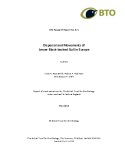 |
|
The Use Of Wetland Bird Survey (WeBS) Data For Rapid Condition Assessment Of Non-Breeding Waterbird SPAs in EnglandGraham E Austin
BTO Research Report 670
British Trust For Ornithology
2015
Opening lines: "Natural England (NE) wishes to adapt WeBS Alerts methodology to provide site condition assessments for inland waterbodies, estuarine and coastal SPAs (specifically, for non-breeding waterbirds us ing the SPAs, where data allow). The initial phase of the project is to provide a rapid output for each feature of each SPA, in order to inform a pressing need for Conservation Objectives of SPAs to reflect condition. This will include comparison of outp uts from Alerts and from Common Standards Monitoring approaches."
|
 |
|
Burton Collision, Displacement and Barrier - Effect Concept NoteElizabeth M Humphreys, Aonghais S.C.P Cook and Niall H.K Burton
BTO Research Report 669
British Trust For Ornithology
2015
From the executive summary: "Offshore wind farms (OWFs) may potentially affect birds in a number of ways, most notably through: i) collisions with turbines; ii) displacement of birds due to effective loss of habitat; and iii) barrier effects where the wind farm creates an obstacle to regular movements to and from breeding colonies or migration. These effects have usually been considered separately in Environmental Impact Assessments (EIAs). There is a need to consider whether the multiple impacts from these different effects in combination may be significant."
|
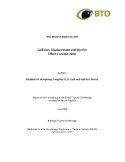 |
|
No report identified
BTO Research Report 668
British Trust for Ornithology
|
 |
|
Review Of Seabird Demographic Rates And Density DependenceC. Horswill, Robert A. Robinson
JNCC Report No 552
(BTO Research Report 667, British Trust For Ornithology
2015
"This report presents individual species accounts for a selection of British seabirds, sea ducks, divers and grebes. Each account gathers the most up to date published estimates on the following demographic parameters: age-specific survival, age-specific productivity, age of recruitment, incidence of missed breeding, and natal and adult breeding dispersal. Particular attention has been given to regional variation in demographic rates, indicating the extent to which estimates may be applied to other less-well studied colonies. Where possible, the intrinsic and extrinsic factors that influence demographic rates are also detailed."
|
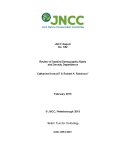 |
|
How High Do Birds Fly? A Review Of Current Datasets And An Appraisal Of Current Methodologies For Collecting Flight Height Data: Literature ReviewChris B Thaxter, Viola H Ross-Smith & Aonghais S C P Cook
BTO Research Report 666
British Trust For Ornithology
2016
From the summary: "The consideration of flight heights is a key factor determining how seabirds interact with offshore wind farms. Of particular interest is the need to accurately predict flight heights, in order to feed into predictive Collision Risk Models (CRM). Data within CRM have traditionally relied quite heavily on boat surveys collected by observers, but now routinely, different methods are being used to estimate flight heights of birds."
|
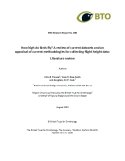 |
|
The Scientific Validity Of Criticisms Made By The RSPB Of Metrics Used To Assess Population Level Impacts Of Offshore Wind Farms On SeabirdsAonghais S.C.P Cook & Robert A Robinson
BTO Research Report 665
British Trust For Ornithology
2015
Opening lines: "The purpose of this report is to consider the validity of criticisms that have been made by the RSPB on the use of risk-based metrics to assess the response of seabird populations to impacts from offshore wind farms. Following the project start-up meeting on 3rd December 2014, it was agreed that this consideration should also include approaches that have been used to set thresholds of additional mortality including Potential Biological Removal (PBR) , Acceptable Biological Change (ABC) and reduced uncertainty Acceptable Biological Change (ruABC)."
|
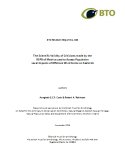 |
|
No report identified
BTO Research Report 664
British Trust for Ornithology
|
 |
|
Consultation to the Birds Directive Article 3 Birds of Conservation Concern and Delivery MechanismsIan G Henderson, David Noble, Rachel Taylor & Veronica Mendez
BTO Research Report 663
British Trust For Ornithology
2015
From the introduction: "This report was commissioned by Natural England and Natural Resources Wales to support the provision of ministerial guidance on the implementation of duties relating to Article 3 of the Birds Directive in England and Wales. The report condenses information from the literature, workshops, advice from stakeholders (both as professionals and/or practitioners); to identify issue facing priority birds species and the mechanisms currently available to public bodies wishing to implement Article 3. Articles 3 and 4(4) (second sentence) of the Directive are designed to ensure Member States ‘preserve, maintain or re-establish a sufficient diversity and area of habitats for wild birds and to ensure that outside those areas which are specifically designated as important bird habitats, efforts are taken to avoid pollution or deterioration of habitats.’."
|
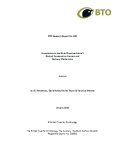 |
|
BirdTrends 2014: trends in numbers, breeding success and survival for UK breeding birdsStephen Baillie, John Marchant, David Leech, Dario Massimino, Sarah Eglington, Carl Barimore, Daria Dadam, Sarah Harris, Allison Kew, Iain Downie, David Noble, Kate Risely and Rob Robinson
BTO Research Report 662
British Trust For Ornithology
2015
Online report at http://www.bto.org/about-birds/birdtrends/2014
|
 |
|
Guidance to Interpretation of Wetland Bird Survey Within-Site TrendsGraham Austin & Viola Ross-Smith
BTO Research Report 661
British Trust For Ornithology
2014
|
 |
|
The Wash Bird Decline Investigation 2014Ian D Woodward, Viola H Ross-Smith, Rafael Pérez-Domínguez, Mark M Rehfisch and Graham E Austin
BTO Research Report 660
British Trust For Ornithology
2015
From the executive summary: "Several studies have documented population declines in species of waterbird that winter on The Wash SPA and are protected as non-breeding features. With a few exceptions, the reasons for these declines are not clear cut. This project brought together findings from a wide range of studies to the identify drivers of population change on The Wash, where possible, for 15 species, and to make recommendations about measures that could be taken to halt or reverse these trends. The basis for this report was the collation of an extensive review of the literature to include information on the waterbird species themselves, information regarding their food resources, habitats, and anthropomorphic pressures that may influence their distribution on The Wash."
|
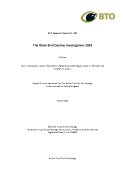 |
|
No report identified
BTO Research Report 659
British Trust for Ornithology
|
 |
|
The Breeding Bird Survey 2013S.J. Harris, K. Risely, D. Massimino, S.E. Newson, M.A. Eaton, A.J. Musgrove, D.G. Noble, D. Procter, & S.R. Baillie
BTO Research Report 658
British Trust For Ornithology
2015
Opening lines: "This is the nineteenth annual report of the BTO/JNCC/RSPB Breeding Bird Survey (BBS), containing the population trends of widespread UK bird species during the period 1994–2013. The BBS is the main scheme for monitoring the population changes of the UK's common breeding birds, providing an important indicator of the health of the countryside. BBS trends are produced each year for over 100 species, and the results are widely used to set priorities and inform conservation action."
|
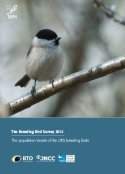 |
|
Review Of Knowledge Regarding The Effect Of Major Estuarine Developments On Bird Populations With Reference To Proposals For An Airport In The Thames EstuaryLucy J. Wright, Veronica Mendez & Niall H.K. Burton
BTO Research Report 657
British Trust For Ornithology
2015
From the executive summary: "Coastal wetland habitat loss of this type has been widely demonstrated to have significant impacts on the bird populations that the habitat supports. We can therefore be confident that habitat loss due to airport development would have significant negative impacts on the bird populations that depend on the areas lost. The Thames Estuary and Marshes and Medway Estuary and Marshes SPAs are designated because together they support populations of 140,515 birds, many of which would be affected by the development either directly (through habitat loss within the airport footprint) or indirectly (e.g. through disturbance or habitat change to areas close to the airport). Over 21,000 waterbirds currently use the area proposed for development and therefore would be directly affect by habitat loss within the airport footprint - this represents around 25% of the current total bird population on the two affected SPAs."
|
 |
|
The Avoidance Rates Of Collision Between Birds And Offshore TurbinesA.S.C.P. Cook, E.M. Humphreys, E.A. Masden, W. Band, & N.H.K. Burton
BTO Research Report 656
British Trust For Ornithology
(Scottish Marine and Freshwater Science Volume 5 Number 16)
2014
From the executive summary: "The selection of appropriate avoidance rates for use in collision risk models at offshore windfarms is often a key part of the Environmental Impact Assessment process. Ideally, these avoidance rates should reflect the behavioural responses of birds to turbines. However, they are often used as a 'fudge-factor'’ to incorporate aspects of model error. The situation is further complicated by a lack of data for marine birds and offshore windfarms. As a consequence, present guidance is based on values that have been derived for terrestrial species at onshore windfarms. This study reviewed data that have been collected from offshore windfarms and consider how they can be used to derive appropriate avoidance rates for use in the offshore environment."
|
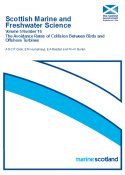
 |
|
WeBS Low Tide Counts on English SPAsCalbrade, N.A
BTO Research Report 655
British Trust For Ornithology
2014
Opening lines: "The Wetland Bird Survey (WeBS), a partnership between the British Trust for Ornithology, the Royal Society for the Protection of Birds and the Joint Nature Conservation Committee (the last on behalf of the statutory nature conservation bodies: Natural England, Natural Resources Wales and Scottish Natural Heritage and the Department of the Environment Northern Ireland), in association with the Wildfowl and Wetlands Trust, monitors non-breeding waterbirds in the UK."
|
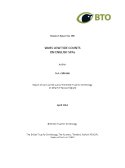 |
|
Analysis Of Lesser Black-Backed Gull Data To Inform Meta-Population StudiesV.H. Ross-Smith, M.J. Grantham, R.A. Robinson, & J.A. Clark
BTO Research Report 654
British Trust For Ornithology
2014
From the executive summary: "Lesser Black-backed Gull numbers in England have fluctuated in recent decades. Both breeding and wintering populations rose sharply in the latter half of the Twentieth Century, mostly due to increases at a small number of colonies and changes in migratory behaviour. However, there was a 31% decline in breeding birds between 2000 and 2011 (largely because of losses at the same key colonies - population trends vary widely between colonies) and this species is on the Birds of Conservation Concern Amber List. It can be taken under three General Licences issued under the Wildlife and Countryside Act 1981, allowing population control in certain circumstances. Lesser Black-backed Gulls are not well monitored in urban areas, where there has been rapid population growth, and where this species may be considered a pest. There is a clear need to review the Lesser Black-backed Gull’s population trends and ecology in England to clarify its conservation status."
|
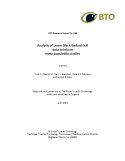 |
|
Notes on the WeBS-Defra Annual Cormorant IndexGraham E. Austin, G.E & Niall H.K. Burton
BTO Research Report 653
British Trust For Ornithology
2014
|
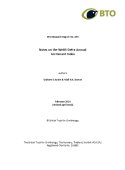 |
|
No report identified
BTO Research Report 652
British Trust for Ornithology
|
 |
|
Towards A Better Understanding Of Predation On Breeding Meadowbird Populations Phase 1, Year 2: Monitoring Wader Nest Success In Relation To Predation At Stanny House FarmD. Dadam, D.I. Leech, J.A. Clark, R.A. Robinson, N.A. Clark
BTO Research Report 651
British Trust For Ornithology
2014
Objectives"To assess the distribution of nests within the study area; to identify the main cause of nest failure in Lapwing (i.e. predation, desertion, flooding); to identify the main predator of wader nests and stage at which predation occurred."
|
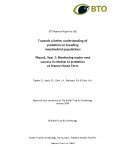 |
|
Bearded Tit (Panurus biarmicus) survey at Stanny House FarmD. Dadam, D.I. Leech, J.A. Clark, N.A. Clark
BTO Research Report 650
British Trust For Ornithology
2014
Aims: "The aims of the project were to: estimate the number of breeding pairs; help to target ringing effort by mapping the presence of breeding adults; investigate if it was feasible to carry out a Retrapping Adults for Survival (RAS, www.bto.org/RAS) project by reading colour rings in the field; and explore habitat associations with distribution of birds at Stanny House Farm."
|
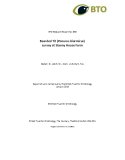 |
|
No report identified
BTO Research Report 649
British Trust for Ornithology
|
 |
|
Review And Analysis Of Changes In Waterbird Use Of The Mersey Estuary SPA, Mersey Narrows & North Wirral Foreshore SPA and Ribble & Alt Estuaries SPAD. A. Still, N. A. Calbrade & C. A. Holt
BTO Research Report 648
British Trust For Ornithology
2014
Opening lines: "The Ribble and Alt Estuaries, Mersey Estuary and The Dee Estuary are sites of national and international importance for their wader and wildfowl populations (Holt et al. 2012). The entire area is important for bird life, and therefore has received various levels of protection. Several sites in particular are designated as Special Protection Areas including the Ribble and Alt Estuaries SPA, the Mersey Estuary SPA and the recently designated Mersey Narrows and North Wirral Foreshore SPA."
|
 |
|
No report identified
BTO Research Report 647
British Trust for Ornithology
|
 |
|
No report identified
BTO Research Report 646
British Trust for Ornithology
|
 |
|
The Breeding Bird Survey 2012K. Risely, D. Massimino, S.E. Newson, M.A. Eaton, A.J. Musgrove, D.G. Noble, D. Procter & S.R. Baillie
BTO Research Report 645
British Trust For Ornithology
2013
"This is the eighteenth annual report of the BTO/ JNCC/RSPB Breeding Bird Survey (BBS), containing the population trends of widespread UK bird species during the period 1994–2012. The BBS is the main scheme for monitoring the population changes of the UK's common breeding birds, providing an important indicator of the health of the countryside. BBS trends are produced each year for over 100 species, and the results are widely used to set priorities and inform conservation action."
|
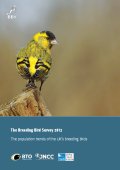 |
|
BirdTrends 2012: trends in numbers, breeding success and survival for UK breeding birdsStephen Baillie, John Marchant, David Leech, Dario Massimino, Sarah Eglington, Alison Johnston, David Noble, Carl Barimore, Allison Kew, Iain Downie, Kate Risely and Rob Robinson
BTO Research Report 644
British Trust For Ornithology
2013
Online report at http://www.bto.org/about-birds/birdtrends/2012.
|
 |
|
Ornithology Technical Report for the Proposed Dogger Bank Teesside A and B Offshore Wind Farm Projects
N.H.K. Burton, C.B. Thaxter, A.S.C.P. Cook, G.E. Austin, E.M. Humphreys, A. Johnston, D. Still, L.J. Wright
BTO Research Report 643
British Trust for Ornithology
2013
Opening lines: "This technical report provides baseline results and an assessment of impacts for ornithology for the Dogger Bank Dogger Bank Teesside A and B projects proposed for the Dogger Bank Zone, a round three lease area in the North Sea awarded to Forewind Ltd. The Dogger Bank Zone, as a whole, has an area of 8,660 sq km. The organisation’s current plan is to secure development consent for six projects, which have a total target installed capacity of 7.2 GW. Its focus is on the first four, which together are Dogger Bank Creyke Beck and Dogger Bank Teesside A&B."
|
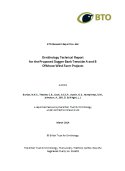 |
|
Humber Estuary Low Tide Programme 2011/12N.A. Calbrade
BTO Research Report 642
British Trust For Ornithology
2013
Opening lines: "The Humber Estuary is ranked as one of the top six sites in the UK for waterbirds. Information on, and management of the bird populations on the estuary rely heavily on data derived from the Wetland Bird Survey (WeBS) Core Counts survey scheme. The WeBS scheme provides sector-based data for the estuary as part of a co-ordinated national counting scheme. As the counts are undertaken around high water, they are able to ensure a relatively high accuracy of counting, as waterbirds are relatively close to the estuary banks."
|
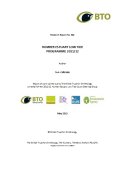 |
|
Wetland Bird Survey Alerts 2009/2010: Changes in numbers of wintering waterbirds in the Constituent Countries of the United Kingdom, Special Protection Areas (SPAs) and Sites of Special Scientific Interest (SSSIs)Aonghais Cook, Carl Barimore, Chas Holt, Warren Read and Graham Austin
BTO Research Report 641
British Trust For Ornithology
2013
|
 |
|
Analysis of waterbird population trends in the Mersey Estuary SPA, Mersey Narrows & North Wirral Foreshore pSPA and Ribble & Alt Estuaries SPAV.H. Ross-Smith, N.A. Calbrade, L.J. Wright & G.E. Austin
Natural England Commissioned Report NECR172
Natural England
(BTO Research Report 640, British Trust For Ornithology)
2015
Opening lines: "The Ribble and Alt Estuaries, Mersey Estuary and The Dee Estuary are sites of national and international importance for their wader and wildfowl populations. They have been classified as Special Protection Areas (SPAs) for many waterbird species. The Mersey Narrows and North Wirral Foreshore is also an important site for birds and is currently a potential Special Protection Area (pSPA). The Wetland Bird Survey (WeBS) is a long-running survey that records the number of all waterbird species on different geographical count units (sectors) of the Ribble and Alt Estuaries SPA, the Mersey Estuary SPA, the Mersey Narrows and North Wirral Foreshore pSPA and The Dee Estuary SPA (as well as many other sites nationally) at monthly intervals. These data can be used to assess population trends in different parts of these sites."
|
 |
|
Measuring the interaction between marine features of Special Protection Areas with offshore wind farm development zones through telemetry: third year reportC.B. Thaxter, V.H. Ross-Smith, N.A. Clark, G.J. Conway, H.M. Wade, E.A. Masden, M.M. Rehfisch, W. Bouten, N.H.K. Burton
BTO Research Report 639
British Trust For Ornithology
2013
|
 |
|
Review Of The Sites Of Special Scientific Interest (SSSI) Selection Guidelines For Breeding Bird Assemblages
Ian Henderson & Rob Fuller
BTO Research Report 638
British Trust for Ornithology
2016
Opening lines: "The existing guidance specification for the selection of SSSIs for birds (NCC 1989) includes the quality of the breeding bird assemblages of different habitats occurring in Britain. This guidance was based, to some extent, on Bird Habitats in Britain (Fuller 1982) and, at that time, the BTO Register of Ornithological Sites. Bird populations, distribution and habitat preferences have changed greatly since 1989 and the current breeding bird assemblage guidance is no longer entirely suitable for SSSI selection. All elements of the guidance required reviewing and updating, including habitat definitions, component species and resulting 'threshold scores' for each habitat."
|
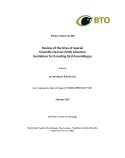 |
|
No report identified
BTO Research Report 637
British Trust for Ornithology
|
 |
|
Updated analysis of Wetland Bird Survey (WeBS) data for the Humber Estuary SSSI, SAC, SPA and Ramsar SiteV.H. Ross-Smith, N.A. Calbrade & G.E. Austin
BTO Research Report 636
British Trust For Ornithology
2013
|
 |
|
No report identified
BTO Research Report 635
British Trust for Ornithology
|
 |
|
No report identified
BTO Research Report 634
British Trust for Ornithology
|
 |
|
Potential Disturbance Effects, Nesting Success And Territory Placement In Stone Curlews at Porton Down 2010-2012
Ian G. Henderson
BTO Research Report 633
British Trust for Ornithology
2016
Opening lines: "Since 2004, a relatively stable population trend on one sub-site of Porton Down (Battery Hill) has contrasted with a strongly declining population trend on a second sub-site (Easton Down) for Stone Curlews. To explain the patterns of declines , the potentially limiting effects of disturbance were investigated and compared to trends in settlement patterns, coupled with new detailed observations of nest behaviour and nest survival rates, using nest cameras, carried out between 2010 and 2012".
|
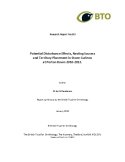 |
|
No report identified
BTO Research Report 632
British Trust for Ornithology
|
 |
|
No report identified
BTO Research Report 631
British Trust for Ornithology
|
 |
|
Ornithology Technical Report for the Proposed Dogger Bank Creyke Beck
Offshore Wind Farm ProjectsN.H.K. Burton, C.B. Thaxter, A.S.C.P. Cook, G.E. Austin, E.M. Humphreys, A. Johnston, C.A. Morrison & L.J. Wright,
BTO Research Report 630
British Trust For Ornithology
2013
|
 |
|
Analysis Of Sea-Watching Data From Holme Bird Observatory, Norfolk
Aonghais S C P Cook, Chris Thaxter, Lucy J Wright, Nick J Moran, Niall H K burton, Jed Andrews, Sophie Barker and Fred Cooke
BTO Research Report 629
British Trust for Ornithology
2014
Opening lines of summary: - Sea-watching represents an under-used and potentially valuable resource for explorin g patterns of seabird distribution around the UK coast and as a tool for monitoring species using the marine environment.
- One of the most comprehensive UK sea-watching datasets has been collected from the Norfolk Ornithologists’ Association’s Holme Bird Observatory through standardised observations undertaken since May 2005. In this report, we provide the results of a collaborative project between NOA and BTO investigating this dataset".
|
 |
|
How Can Research Help Deliver A 'Coherent & Resilient Ecological Network'?
David J. Baker & Robert J. Fuller
BTO Research Report 628
British Trust for Ornithology
2013
Opening lines of summary: "Lawton et al. (2010) reviewed the status of England's ecological network and concluded that we require 'More, bigger, better, and joined'. Here we comment on some of the key research questions emerging from this review, questions that will be crucial towards delivering a 'coherent and resilience' ecological network. The Lawton Review focused specifically on England, yet the principles and conclusions contained within it are relevant to many cultural landscapes where human impacts have greatly reduced or degraded habitats of value for wildlife. We highlight some key areas for future research below".
|
 |
|
No report identified
BTO Research Report 627
British Trust for Ornithology
|
 |
|
Development of MSFD Indicators, Baselines and Targets for Population Size and Distribution of Marine Birds in the UKE.M. Humphreys, K. Risely, G.E. Austin, A. Johnston, N.H.K. Burton
BTO Research Report 626
British Trust For Ornithology
2012
|
 |
|
No report identified
BTO Research Report 625
British Trust for Ornithology
|
 |
|
The Breeding Bird Survey 2011K. Risely, D. Massimino, A. Johnson, S.E. Newson, M.A. Eaton, A.J. Musgrove, D.G. Noble, D. Procter & S.R. Baillie
BTO Research Report 624
British Trust For Ornithology
2013
"This is the seventeenth annual report of the BTO/JNCC/RSPB Breeding Bird Survey (BBS), containing the population trends of widespread UK bird species during the period 1994–2011. The BBS is the main scheme for monitoring the population changes of the UK's common and widespread breeding birds, providing an important indicator of the health of the countryside. BBS trends are produced each year for over 100 species, and the results are widely used to set conservation priorities."
|
 |
|
No report identified
BTO Research Report 623
British Trust for Ornithology
|
 |
|
Habitat use by Avocet and Dark-bellied Brent Geese on the Deben Estuary over the high tide periodNeil Calbrade & Nick Mason
BTO Research Report 622
British Trust For Ornithology
2012
"This study investigates the use of habitats on the Deben Estuary in Suffolk by Avocets Recurvirostra avosetta and Dark-bellied Brent Geese
Branta bernicla bernicla over the high tide period."
|
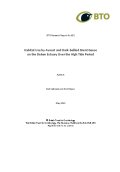 |
|
No report identified
BTO Research Report 621
British Trust for Ornithology
|
 |
|
No report identified
BTO Research Report 620
British Trust for Ornithology
|
 |
|
No report identified
BTO Research Report 619
British Trust for Ornithology
|
 |
|
Strategic Ornithological Support Services. Project SOSS-02. A review of flight heights and avoidance rates of birds in relation to offshore wind farmsAonghais S.C.P. Cook, Alison Johnston, Lucy J. Wright & Niall H.K. Burton
BTO Research Report 618
British Trust For Ornithology
2012
"This report reviews current information on the flight heights and avoidance rates of key seabird species that occur in UK waters and that are thought most susceptible to effects of collisions with offshore wind farms and which typically may need to be considered in EIAs. Recommendations are provided on the use of this information and where further work is needed."
|
 |
|
The effects on waterbirds of dredging at the Cardiff Bay Barrage: report for 2011/12C.A. Morrison, R. Taylor, A. Hallam, N.H.K. Burton
BTO Research Report 617
British Trust For Ornithology
2012
"This study reports on the effects of maintenance dredging on the birds utilising mudflats within and adjoining the outer harbour of the Cardiff Bay barrage using data collected in January and March 2012. Results are compared to those reported between 2002 and 2012."
|
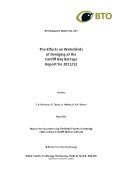 |
|
Development of MSFD Indicators, Baselines and Target for the Annual Breeding Success of Kittiwakes in the UKD. Dadam, A.S.C.P. Cook & R.A. Robinson
BTO Research Report 616
British Trust For Ornithology
2012
|
 |
|
Development of MSFD Indicators, Baselines and Target for Seabird Breeding Failure Occurrence in the UKA.S.C.P. Cook, V.H. Ross-Smith & R.A. Robinson
BTO Research Report 615
British Trust For Ornithology
2012
|
 |
|
Odonata recording within BirdTrack: Non-technical specification
Andy Musgrove, Iain Downie, Mark Hammond, Nick Moran & Karen Wright
BTO Research Report 614
British Trust for Ornithology
2012
Opening lines: "BirdTrack (www.birdtrack.net) is an online system for birdwatchers to enter records of birds, either as single 'casual observations' or as 'complete lists'; the latter are preferable as they allow assessment of recording effort and inference of species absence. BirdTrack is a joint project of the British Trust for Ornithology (BTO), Royal Society for the Protection of Birds (RSPB), BirdWatch Ireland (BWI) and the Scottish Ornithologists’ Club (SOC), the core funding being provided by the first two of these organisations and the project run from the BTO."
|
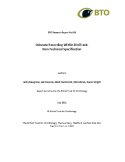 |
|
Ornithological Surveys at Loch Fitty, Fife: Breeding Season, 2010 and Winter Season 2010-2011J. Bray, A. Thiel & J. Calladine
BTO Research Report 613
British Trust For Ornithology
2011
|
 |
|
Production of Representative Cormorant Population Trends with Confidence LimitsD.F. Chamberlain, Graham E. Austin, R. E. Green and Niall HK Burton
BTO Research Report 612
British Trust For Ornithology
2013
Background & Aim: "The Wetland Bird Survey (WeBS) produces indices and smoothed trends for over 70 species of waterbird overwintering in Great Britain and the four constituent countries of the UK, revised on an annual basis. Regional trends (based on administrative regions of the Environment Agency and the Scottish Environment Protection Agency) are also produced routinely. In addition, a Cormorant trend for England and Wales combined is generated to supply FERA / DEFRA. All these trends are generated using the Underhill Indexing Method. With respect to the Cormorant index, there are two issues that give cause for concern. Firstly, the current index is based on all consistently counted (at least 50% of potential counts undertaken) WeBS sites in England and Wales both coastal and inland. It would be informative to produce a separate population trend from inland sites only. Secondly, and more importantly, because WeBS counts are based on sites of variable size and nature, hitherto no attempt has been made to attach confidence limits to these indices. While this has not been considered an issue previously for the general population trend monitoring for which WeBS indices are used, it does becomes an issue when one wishes to consider the significance of between winter changes to the index value with respect to control measures such as those currently in place for Cormorants. Thus an action point arising from a meeting held between Defra, government agencies and NGOs on Cormorants (9 January 2009) was to consider the possibility of incorporating data from the WeBS Dispersed Waterbird Survey to inform the WeBS index for Cormorant to allow confidence limits to be fitted to the Cormorant trend. The analysis presented below arose from a later meeting (2 February 2009), and actioned as a result of discussion at a meeting informing DEFRA's current review of the culling of fish-eating birds (5 October 2011).This analysis would add considerably to our understanding of trends in the Cormorant population of England and Wales, both at this national level and regionally."
|
 |
|
Oystercatcher feeding and prey identification in the Carmarthen Bay and Estuaries Shellfisheries at Low Tide in Winter 2011/12J. Bray, R.C. Taylor & N.H.K. Burton
BTO Research Report 611
British Trust For Ornithology
2012
|
 |
|
Measuring the interaction between marine features of Special Protection Areas with offshore wind farm development zones through telemetry: second breeding season reportChris B. Thaxter, Viola H. Ross-Smith, Nigel A. Clark, Greg J. Conway, Helen Wade, Elizabeth A. Masden, Mark. M. Rehfisch, Willem Bouten and Niall H.K. Burton
BTO Research Report 610
British Trust For Ornithology
2012
|
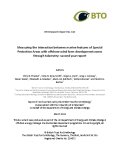 |
|
BirdTrends 2011: trends in numbers, breeding success and survival for UK breeding birdsStephen Baillie, John Marchant, David Leech, Anna Renwick, Sarah Eglington, Andrew Joys, David Noble, Carl Barimore, Greg Conway, Iain Downie, Kate Risely and Rob Robinson
BTO Research Report 609
British Trust For Ornithology
2012
Online report at http://www.bto.org/about-birds/birdtrends/2011
|
 |
|
Enhancing data quality of bird records for the National Biodiversity NetworkNick Moran and Andy Musgrove
BTO Research Report 608
British Trust For Ornithology
2011
"This report aims to establish recommendations for data format for bird records, along with quality assurance and data checking procedures, and advising on best practices for dealing with sensitive records. Additionally, there is discussion on establishing a framework for how bird records should be exchanged and shared. The report comprises five sections: guidance on the information bird records should contain; suggested 'rules' for quality - assuring bird records; an overview of the existing processes for verifying these records; advice on dealing with sensitive records; and a suggested data flow model."
|
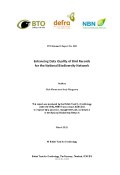 |
|
Tenth Year of Ornithological Monitoring of Mitigation Areas at Pohharnal East Ayrshore, 2011J. Bray, A. Thiel & J. Calladine
BTO Research Report 607
British Trust For Ornithology
2011
|
 |
|
No report identified
BTO Research Report 606
British Trust for Ornithology
|
 |
|
No report identified
BTO Research Report 605
British Trust for Ornithology
|
 |
|
No report identified
BTO Research Report 604
British Trust for Ornithology
|
 |
|
The Biodiversity in Glasgow (BIG) ProjectElizabeth Humphreys, Paul Kirkland and Dan Chamberlain
BTO Research Report 603
British Trust For Ornithology
2011
"The Biodiversity in Glasgow (BIG) project was set up as a collaboration between BTO Scotland, Butterfly Conservation Scotland and Glasgow City Council and ran from January 2007 to April 2009. The main aim of the project was to carry out the largest ever volunteer survey of the birds, butterflies and their associated habitats within the green spaces of the city. This information was then used to determine the key habitats for enhancing bird and butterfly diversity within green spaces."
|
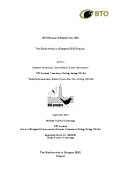 |
|
Third Year of Ornithological Surveys at House of Water, East Ayrshire: Breeding Season, 2010 and Winter Season 2010-2011J. Bray, A. Thiel & J. Calladine
BTO Research Report 602
British Trust For Ornithology
2011
|
 |
|
No report identified
BTO Research Report 601
British Trust for Ornithology
|
 |
|
No report identified
BTO Research Report 600
British Trust for Ornithology
|
 |